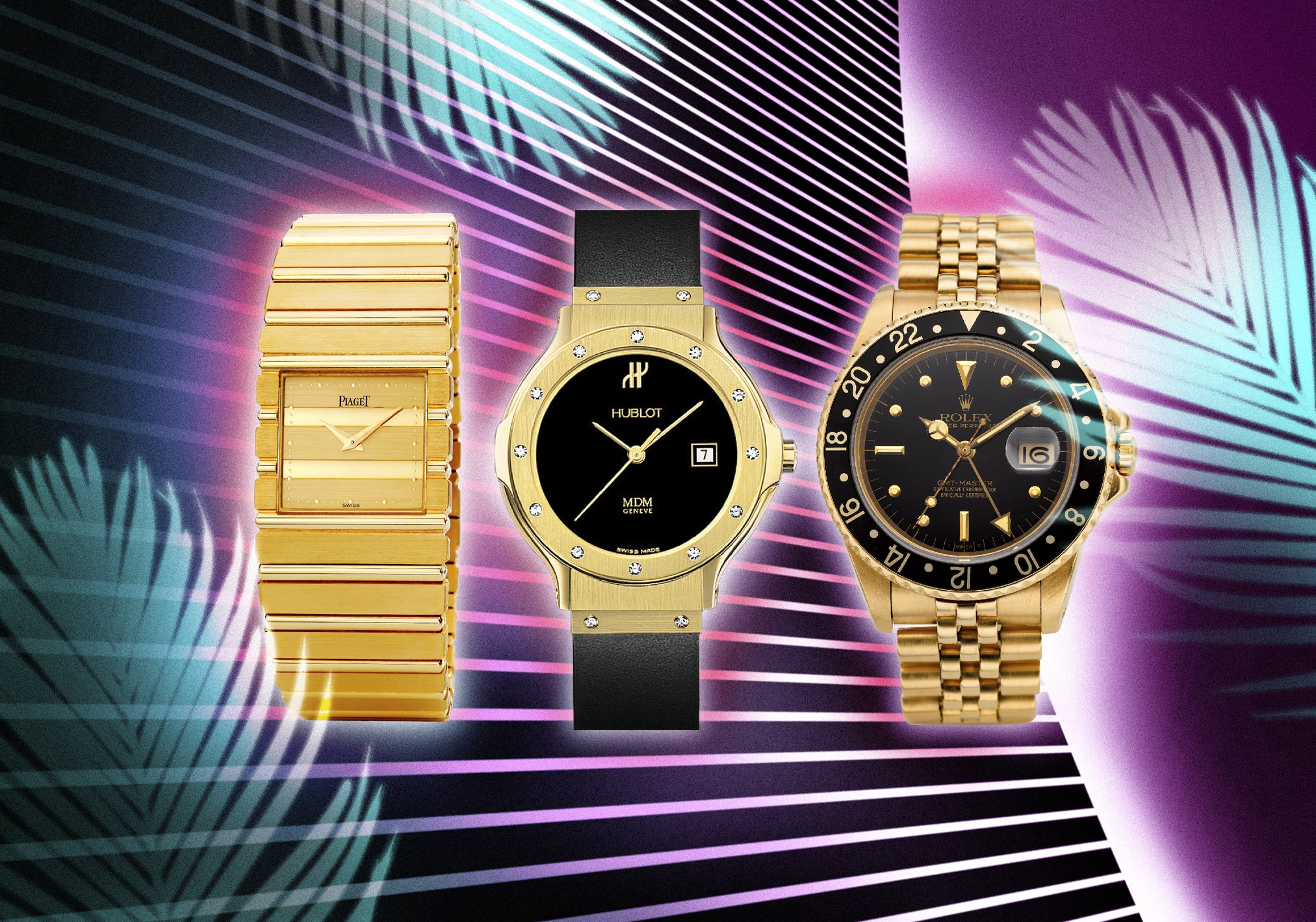A decade ago, when Menta Watches founder Adam Golden first started working in the industry, he would weigh certain historic but undesirable pieces, then price them purely based on their gold value, like he was some kind of 19th-century prospector. At the time, the titanic steel sport watches of the ’70s were in vogue: the Audemars Piguet Royal Oak, the Patek Philippe Nautilus, the Vacheron Constantin 222. But lately, Golden has noticed a change in the market for these styles, even the classic ones. “Prices have flatlined on them,” he tells me. Today, many collectors are more interested in what Golden calls “jewellery watches” – models that blind with diamonds, sapphires, precious metals and immaculate stone dials. Gold is no longer gaudy; it’s cool. Whereas it was once primarily women interested in these watches, now, he says, “it’s literally everybody.”
No era of watchmaking satisfies these evolving tastes quite like the ’80s, when the maisons of Switzerland were in an arms race to dazzle their clients, not just with totems of newfound affluence, but also with fearless designs. In the ’70s the watch world had been decimated by the introduction of quartz, the mechanism that made watches cheaper and easier to produce, undercutting the Swiss. So at the turn of the decade, the high end of the industry responded with several models that put a luxurious spin on the idea of watches as fashionable accessories.
Piaget typified this move with its Polo, a gold timekeeper neatly disguised as a bracelet. The year 1980 brought the debut of Patek Philippe’s reference 3770 Nautilus, colloquially known as the “Nautellipse” among collectors for its resemblance to a hybrid of the sporty Nautilus and elegant Ellipse. A new brand called Hublot emerged with a similar recipe: its debut reference, the Classic Original, attached a rubber strap to an all-gold case – a radical combination. “Eighties watches were quite optimistic about the future,” says Phillip Toledano, a collector well-versed in the period. “In the ’80s, I feel like no one was interested in the past at all.”
Such unburdened thinking is visible in famously daring models. Seiko worked with car designer Giorgetto Giugiaro to create asymmetric pieces for Aliens, while Omega made space-age Seamasters. And Louis Vuitton debuted its Monterey II, a 1988 watch with a ceramic case and a screw shank protruding from 12 o’clock. Largely ignored for decades, that piece has suddenly become the reference of the moment. Having never moved a single one, Golden has sold six over the past few months. “Everybody’s very design-oriented now,” he says.
Indeed, it seems collectors everywhere are once again responding to the siren song of ’80s Swiss excess. In 1986, IWC put out the first watch made of ceramic, a material that appealed to collectors eager to flaunt something unique and valuable. Rolex’s reference 16758, which came in full yellow gold and featured the coveted “nipple” dial – with more gold indices – became one of the brand’s definitive pieces of the era. Now, as echoes of that decadent decade grow more audible, Rolex has announced an all-gold GMT-II as one of its major releases, while IWC and Audemars return to ceramic for their most audacious and coveted styles.
While these blingy, design-forward watches were once coveted by fusty collectors, Golden now finds a younger generation flocking to these pieces. Bad Bunny has developed one of the trendiest wrists in the world by regularly turning to ’80s models.
As connoisseurs return to these watches – and brands mine this time period for inspiration – we’re seeing a larger evolution of taste. Watch lovers are finally moving on from the same old sport models and becoming more receptive to challenging, distinctive designs. In the process, they’re finding great watches from a decade in which the industry was redefining itself.
A version of this story originally appeared in the February 2024 issue of GQ with the title “The Return of the Opulent ’80s”


